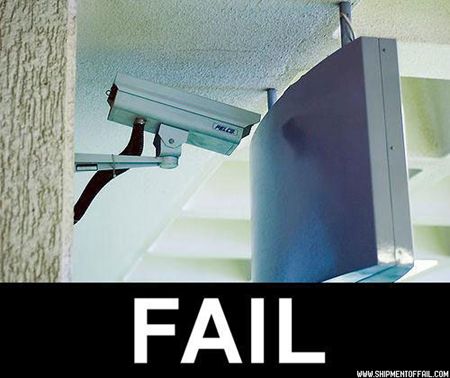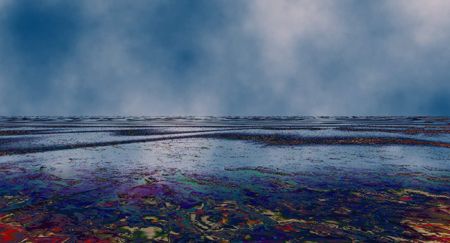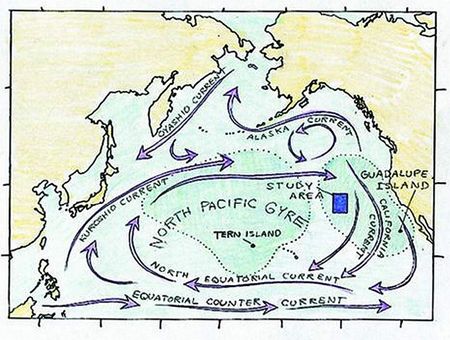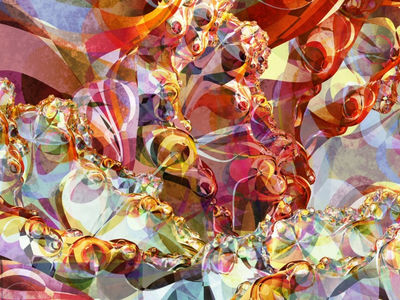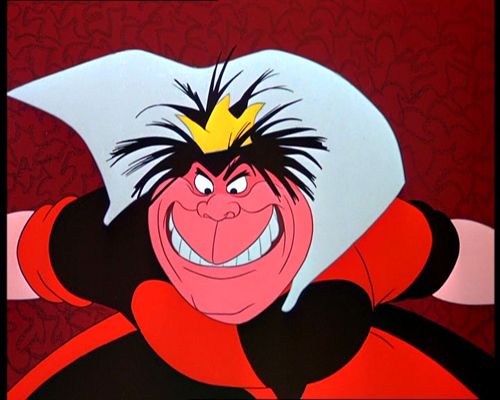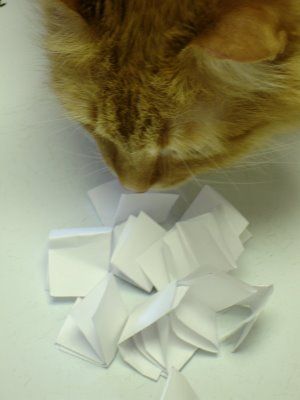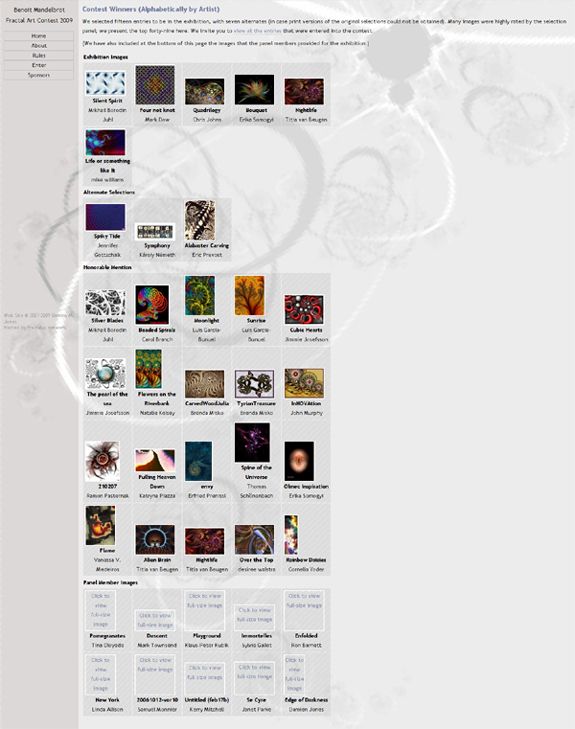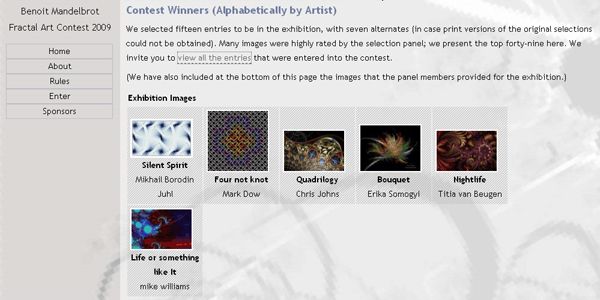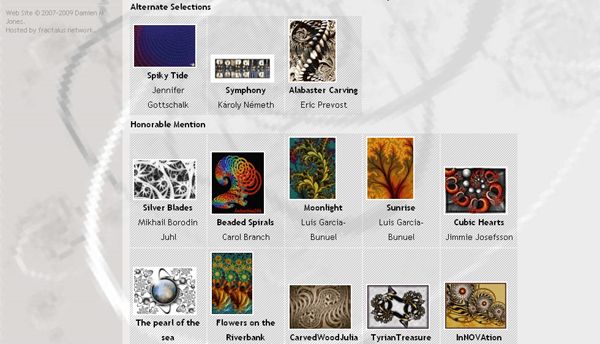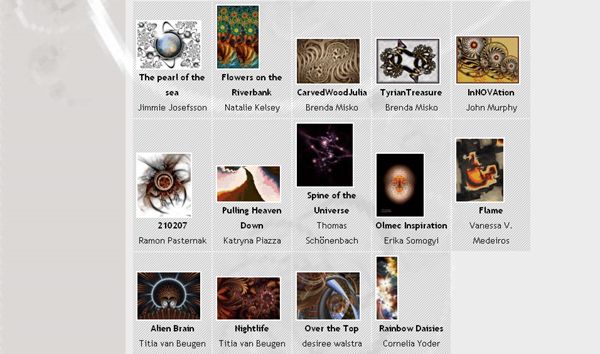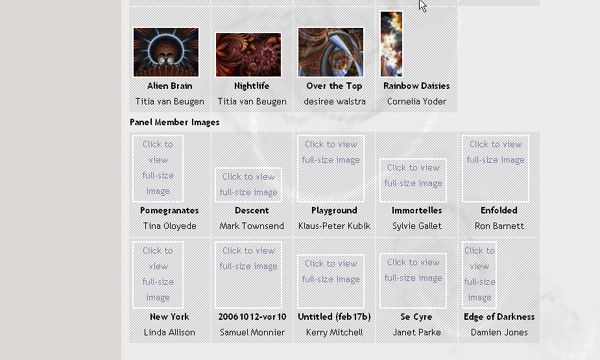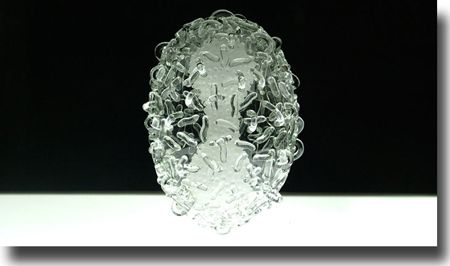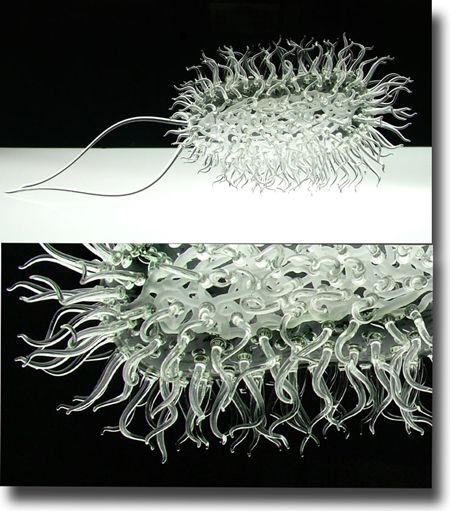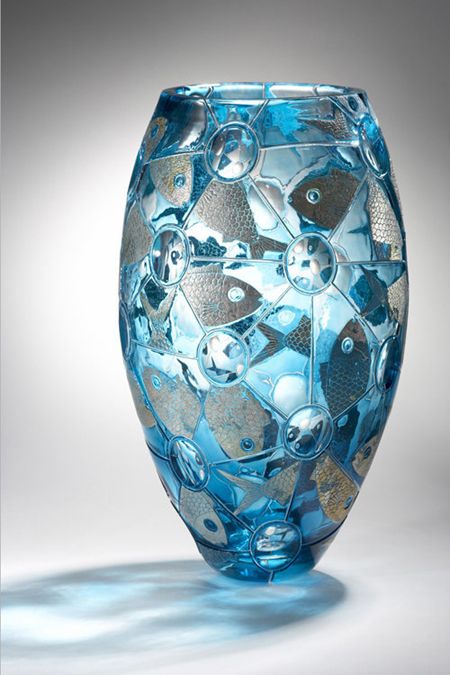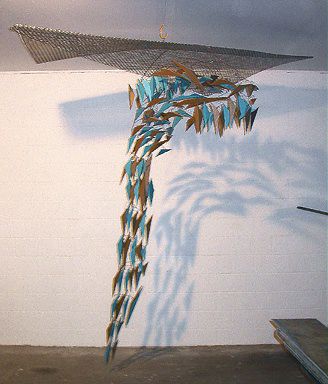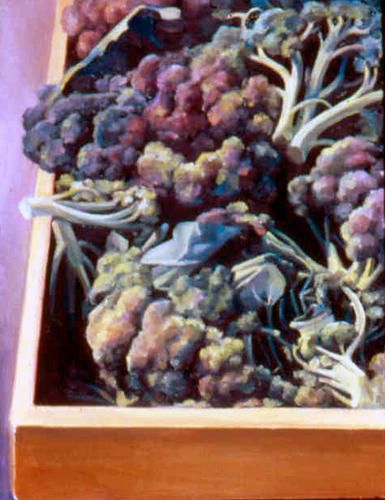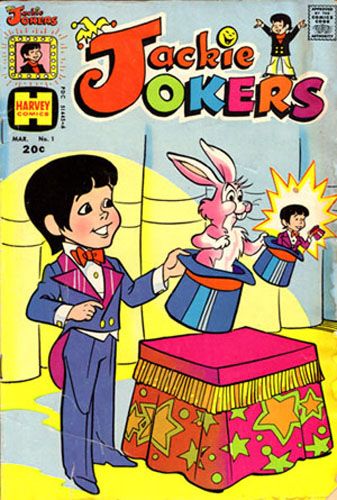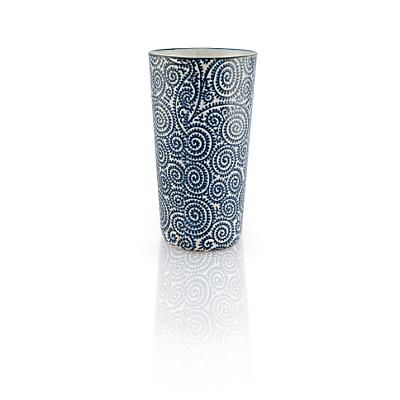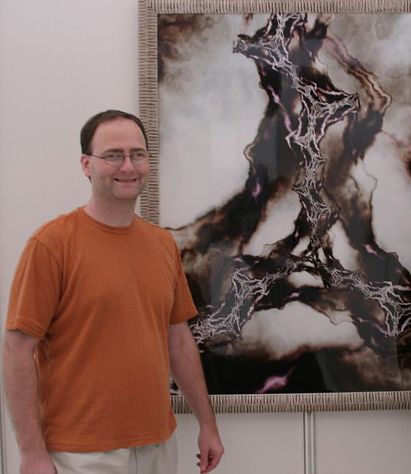
"I'm the decider!"
Power tends to corrupt, and absolute power corrupts absolutely.
--Lord Acton
The recent revelatory leak that a pre-sorted "winners page" was being built by the director of the Benoit Mandelbrot Fractal Art Contest leads to an inescapable conclusion. The competition is indeed a one man show. The director, Damien M. Jones, appears to be playing the role of sole gatekeeper. It looks like Jones not only screens all entries, he also classifies them, thus sending tacit signals to the BMFAC judging panel as to exactly where various entries should be placed. The BMFAC judges are strawmen; they don't select so much as shuffle, like an iPod, material that's been pre-ordained for them by Jones. If your entry doesn't get past his initial sorting, you're out. Once that happens, Benoit Mandelbrot, the honorary chair of the contest, won't get the chance to pass judgment on your work, nor, for that matter, will the rest of the selection panel. In fact, Mandelbrot, the esteemed mathematical theorist and fractal pioneer for whom the contest is named, is merely a figurehead, a kind of trophy wife who looks good fronting the contest but has little to do in the actual selection process. The contest should therefore be renamed for the individual who plays the god-like role of deciding which entries live or die. BMFAC should more appropriately be called The Damien M. Jones Fractal Art Contest. After all, that's what it truly is.
It wasn't enough to load the judging panel with Ultra Fractal enthusiasts, including coders, teachers, apologists, and even the UF author himself. It wasn't enough to rig the rules by calling for massive file sizes that only a program like Ultra Fractal can easily handle. It wasn't even enough to hand many of the judges a back door pass key enabling them to display their own work in a (supposedly) juried competition they themselves oversaw. No. These incredible conflicts of interest, examples of UF privileging, and self-serving publicity stunts, were all contrived to radically skew BMFAC to heavily showcase exactly the kind of work that Jones and his UF paisanos produce and to hold up their style as rigorously judged, if not the epitome of our art form.
Astoundingly, none of that elaborate wrangling was enough. Apparently, BMFAC's director and judges and sponsors still needed an ace in the hole. So, Jones, devoted to the interests of Ultra Fractal deeply enough to write this article, took it upon himself to insure that only work he approved of would be pre-approved for the already UF-inclined panel. With this final step, the deck would be fully stacked.
How else is one to interpret what Tim stumbled into last week when the "winners page" opened as he linked to it while drafting an OT essay. We've already shown in our last few posts why the "test page" theory put forth on the UF List won't fly. The winners page was based on a template from the 2007 contest. It worked fine then, and a test, if even necessary, could have been made by importing a single image. Why test with so many images from current 2009 entries meticulously titled, identified by artist, and, most significantly, classified into three categories? Furthermore, if the "winners page" was only a test, then why were two additional entries added after I posted the screen caps last Thursday? That's not testing. That's sorting.
Tim referred, probably with some sarcasm, in his last post to the "official response" to the leak. Of course, Jones won't talk to Orbit Trap directly, but he did issue an explanation of sorts on the Ultra Fractal Mailing List, housed on Jones' own server. It seems he's only comfortable talking within the walls of his own fortress among friendlies who'll provide a chorus of nods to his every proclamation. Since the UF List is a public forum, though, here is what he offered by way of an explanation for the "winners page" leak:
Indeed, no winners have been selected and any page purporting to have them is an error.
I did indeed duplicate the 2007 site in prepping the 2009 site, and neglected to include a check on the winners.php page to see if the winners had actually been selected. Since that winners.php page isn't actually linked from the main page of the site and the contest site configuration is still set to accept submissions, for the page to even appear is a bug (now fixed), and for anyone to find it they had to go looking for it--essentially, low-grade hacking. Digging for dirt, as it were. It's embarrassing for me to have missed this check, but it should be equally embarrassing for any would-be critic to try to manufacture issues where there are none.
The contest is still open until the 10th and the winning entries have not been determined.
Note that Jones admits building the page. The "bug" was merely that the page was "live" and visible. Think for a moment. What kind of a check would have been in place "to see if the winners had actually been selected"? Isn't Jones aware of the material he's consciously placing on his own page? The page isn't self-aware; Jones is the one positioning those entries into the various slots that serve as signposts for where he feels the second rounders should be situated. And he has done all of this with no input whatsoever from BMFAC's other judges. Kerry Mitchell, a judge, made clear on the UF List last Thursday that the panel had not yet convened. Even if the winners have yet to be finalized, Jones' hunting and gathering of entries is laying out his own picks for the judges' commendations. The only thing being "manufactured" here is Jones' evasion.
And this, you understand, is the best case scenario for what's going on. For all we know, Jones could be making all of the final selections in advance, and the BMFAC judging panel merely rubber stamps the director's choices. Maybe you fall in line or Jones doesn't ask you back for the honor of "judging" the next contest. Given BMFAC's history of secrecy, how can anyone be certain what's what?
This entire process, mirrored, as Tim pointed out last post, by the recently deceased Fractal Universe Calendar, is completely backward. In a conventional literary contest, screening is done by a panel who sends a pool of finalists to one judge. However, let's be clear: These finalists are never categorized with pre-assigned preferences. BMFAC puts the sorting in the hands of one enormously powerful person and allows him to recommend final placement. A better comparison could be made to the art contests run by the Museum of Computer Art. MOCA makes all entries instantly available for public view. Anyone, including the judges, can visit the online museum anytime during a competition to review the entries. Once the deadline passes, then the judges convene, discuss, cast votes, and select a modest field of artists who placed or received honorable mentions. This seems fair and well handled to me. BMFAC, on the other hand, operates in buttoned-down stealth mode with the director having a heavy hand over who makes the grade.
I mean, seriously, what else could Jones have possibly been doing but weeding out and pre-slotting entries? He has yet to explain exactly what kind of "prepping" he was undertaking. He'd rather transfer blame to OT for accidentally uncovering his chicanery. We were "hacking," you see, so that obviously excuses whatever sieving of entries Jones was tackling. However, I'm a little unclear as to how one can hack a page that is viewable to anyone who surfs to it. Tim stumbled onto the page while writing a draft for a post about tired fractal art. He thought it might be funny to link to the 2009 winners page that would have a similar URL to the previous contests. He expected to see nothing, or maybe one of Jones' chiding bandwidth theft messages once popular on Fractalus. To Tim's amazement, the "winners page" materialized. This is hacking? We put up a link to the page on OT, a link that was active for almost 24 hours. I imagine many of our readers visited that link, now down and appearing as a "security error." Did any of you who used it have to hack in to see it? The link was so public, in fact, Google actually indexed it. The hacking charge is absurd, or, worse, a lie. Even if it were true, Jones has yet to convincingly explain why current entries were being sorted into categories before the judging panel had yet to convene.
The question for fractal artists everywhere is whether you are comfortable having the public perception of our art form so powerfully entrenched in the hands of one person -- a person who, by his decisions and actions, has shown a repeated pattern of bias and preferential treatment that continually benefits himself, his friends, his loyalists, and his software of choice. Fractal art, and all that it is and can be, is not his personal property. It belongs to all of us -- absolutely...
~/~
Update: My bad. I corrected a cut and paste typo leading to a garbled sentence at the end of the second paragraph.
Tags: fractal, fractals, fractal art, fractal blog, benoit mandelbrot fractal art contest, the damien m jones fractal art contest, damien m jones, the decider, it's good to be the king, cruelanimal, orbit trap
